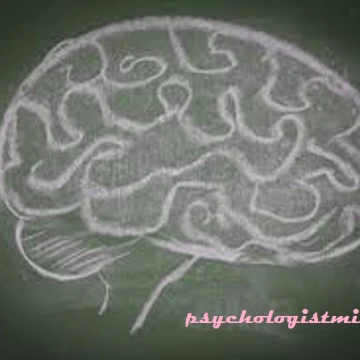“What’s your prequel Heather?”
I am sure you have heard of “do overs” and how we rarely ever get one in life. We may often regret our actions and perhaps as a result we may learn from our mistakes, changing for the better. At times we may just be fools and repeatedly make the same mistakes. But we cannot rewind or delete our actions no matter how much we may block them from our consciousness. Denial is evolutionarily adaptive.
As a country, the United States is a bit obsessed with sequels. While we cannot delete past actions, oftentimes we seek to keep something like a personal storyline going, no matter how ill-advised that may be. Look at American soap operas, Many have lasted 30 years. Wow, talk about growing old with someone. Foreign soap operas tend to be time and storyline-limited. Collectively, we wanted to see Ripley keep coming back as a bigger bad-ass fighting the Aliens. We wanted to know if Clarice ever caught up with Dr. Lecter. And for some reason, we have had a long history with Shrek and Austin Powers; Yeah Baby! We resurrected Torchwood despite the fact that the majority of the characters died in the British series finale, but we just couldn’t let go. Americans just don’t like to see their heroes die. We like sequels. It is in our in collective consciousness, perhaps even our DNA. I mean, DNA is about reproduction, right? Perhaps that particular DNA sequence is related to a collective fear of dying; of things ending.
Look at our politicians. Governor Sanford (who hiked the Appalachian Trail all the way to Argentina to hang with his mistress) from South Carolina is staging a comeback. Hilary is considering another presidential run and Weiner is testing the ick-factor waters. They and their supporters believe that these individuals’ stories are unfinished and that there is a second act. Whether that is true will be determined by the polls, but we certainly do love a comeback.
As a nation, we have demanded iteration after iteration of our superheroes, re-inventing familiar characters repeatedly, often elaborating new or different facets of their personalities that would have horrified their earlier incarnations. It made major headline news when Captain America was killed off in his namesake comic by a sniper. The headlines back then read “comic superhero killed off…for now”. We cannot accept that there are final acts. As we have seen in many television shows, resurrections are not uncommon (e.g. Spike and Drusilla on Buffy the Vampire Slayer). Again, there is great reluctance to let a story end. In The Afterlife of a Character, 1726-1825, David Brewer coined the term “imaginative expansion” to describe the desire to “see more,” or to know what happens next in a narrative after it has ended. He noted that characters such as Gulliver and Falstaff became part of the common experience and imagination. People wanted these characters to not only live on, but to have a full life. So, this obsession with sequels is as integral to our collective identity as any other entity.
The rock band The Sundays had a song in the ‘90s called “Here’s Where the Story Ends.” That was a time where grunge music ruled and there was a bit of a common depressive state. Around that time, abject art (Mapplethorpe, for example) was also taking center stage in major arthouses and museums throwing total chaos into the mix. The song by The Sundays made it onto the charts and probably seeped into the collective consciousness prompting many to ask how could we let the story end? The answer is that we couldn’t. In 1991, the ultimate sequel was written. The novel “Scarlett” was written in 1991 by Alexandra Ripley as a sequel to Margaret Mitchell’s Gone with the Wind. Sequels are in part about trying to find that happily ever after. We can’t let things just be what they are and how they end. There was no way, that people collectively could let Rhett and Scarlett stay broken up forever. Check out this storyboard discussion on the fate of Scarlett: http://www.goodreads.com/topic/show/968595-if-the-sequel-to-the-book-would-have-been-written-do-you-think-rhett-an
How many times have Jude Law and Siena Miller broken up and gotten back together? How many people who contributed to the Veronica Mars 2 million dollar kickstarter campaign are looking forward to reconciliation between Veronica and eternal bad-boy Logan?
And while we can’t let those stories end, there does come a time where you start to wonder “what else”? While we are obsessed with sequels and continuing life and story trajectories; there does come a time when our superhero, such as Batman, starts to age. Geriatric superheroes are no fun. We want our protagonists to live on in eternal youth. Fear not, Hollywood always has a solution. Prequels. We simply age our heroes backwards, explore their formative years, per se. In 1994, George Lucas began writing the screenplay for Episode I: The Beginning effectively starting the Star Wars trilogy Prequels. The film Butch and Sundance: The Early Days, is recognized as one of the first film prequels, but Star Wars really got us going on this whole prequel phenomenon that is part and parcel of every television show and film released.
A prequel is a work that forms part of a back-story to the preceding work. They tend to explain the background which led to the events in the original, but sometimes the connections are not as explicit. Sometimes, prequels play on the fact that the audience knows what will happen next, using deliberate references to create dramatic irony. But prequels are essentially origin. They are the Adam and Eves. Recently, we have seen the release of prequel television shows such as Caprica, The Carrie Diaries, Hannibal, and The Bates Motel. They are all attempts to get us into the psychology of the character; to help us understand why and how they ended up in the dark situations they found themselves in during the original shows. Since the Star Wars prequels were released, stories not only have no end but now they all have possible expanded beginnings. Storytellers can now just turn back the clock and put forth a beginning that takes place before the events of the initial film in a franchise. The prequel is meant to deepen our understanding of the characters of the source material.
Haven’t you always wanted to know why the witch of the west was evil; what led her to be this way? The recently released “Oz the Great and Powerful” tells the backstory of the fantasy realm’s wizard and witches before Dorothy dropped a house on one of them. So too did the popular Broadway play “Wicked”.
All this focus and emphasis on understanding or trying to dig into people’s origin story, has me thinking about the origin story of employees. When we are first considering hiring an employee, we oftentimes do what is called a “reference check.” But what truly is the utility of that practice? First off, most people do not put down as references that would give an honest assessment of skill sets and most employers are advised to not say anything that could be subject to legal action. We are looking for an origin story in the hopes we can gauge future productivity, but it is really a sham. Talk about visiting the Wizard of Oz. I met someone a while back who was a horrible employee in no uncertain terms, spending the majority of her time photocopying romance novels, but she had received an outstanding reference from her former employer. It had to be that they were desperate to be rid of her so they gave her a glowing recommendation. Many employees come damaged to a new workplace and eventually that state of being seeps into their everyday work life. There is nothing that a reference check can really do to prepare you for that. I don’t know about you, but I barely put any weight on reference checks anymore.
Besides the reference check, there are many other points where “origin” narratives get bandied about in the workplace. Just today, I was sitting with a colleague where we noted that in the HIV/AIDS non-profit field not many employees come in with a Masters in Public Health or with a clinical social work degree. We have engineers, dancers and marketers in the non-profit workplace. Which inevitably leads to “How did you get into this and why are you doing this?” conversations. Many times answers include “well, I got tired of corporate life” or “I needed something more meaningful” or “my cousin died of AIDS” or there is an intense need to connect to the community. Everyone has a prequel to sell and an audience to sell it to.
When I started in my field, a network colleague actually sent a letter to a funder about me. In said letter he noted that he had no idea where I stood or where I was coming from. I had a clean slate. Everyone wanted to know my prequel. However, because I was an outsider and I didn’t grow up in the movement, I was a tabula rasa. How do I define my origin? Well, it depends on my audience. I have learned to read in part what people expect to be my motivator and I can weave them a story that makes them feel that all makes sense in the world.
Employees normally have sequels–they move on to new jobs after a few years. But most of the time, once you leave, your workplace story has ended and there really is no demand for follow-up stories. More often than not, you get to start a whole new prequel. So, think hard about your life story as you are likely to be asked to add a few underlying layers to it. As Polish poet Wislawa Szymbroska observed, “Every beginning is only a sequel, after all, and the book of events is always open halfway through.”
- Each Pope has a prequel
- Don’t be The wicked witch of the west
- What led him to be so wary of the trojan horse?
Sequels are so last century: Tell me instead your Prequel
Categories: Culture, current events, Film, Management, non-profit








Reminds me of a book Creating a Life by three sucessful women than changed how I created my prequels. Thanks for reminder. Well said.
LikeLike
Oh cool. I have a business trip coming up maybe i will download book for airplane reading.
LikeLike
Also, American Office compared to British Office. Even with the main character gone, the series kept going…
LikeLike
Oh, thats right! I forgot about The Office. It went on but the heart was gone.
LikeLike
T.V prequel… The T.V show Spartacus, Did one when the main character was fighting cancer, Well done.
My personal,
I moved from NYC to Georgia,No one knew me. I got to start over. Well, after 10 years I pretty much made a mess out of that. So I moved again. With lessons from my last to “do overs”. Going to do this right
LikeLike
Thanks for sharing. I too went from nyc to georgia. Just 6 months though. Interesting place for a new yorker. Good luck eith your new adventure!
LikeLike
Reblogged this on Le Little Fox and commented:
“As Polish poet Wislawa Szymbroska observed, “Every beginning is only a sequel, after all, and the book of events is always open halfway through.”
LikeLike
Reblogged this on Chasing After Flow and commented:
This is a great post about our fascination with fictional characters and wanting to continue on with them during their journeys. It covers one of the keys of how we can keep the magic of our escapism alive.
LikeLike